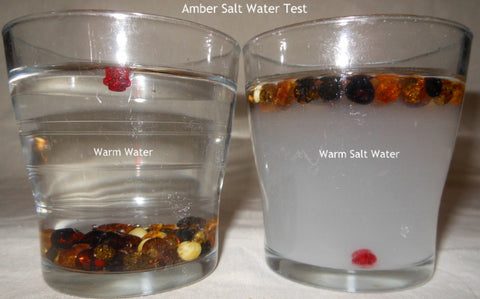Your Cart is Empty
Code "10OFF"Saves 10%! We Ship Daily by 2pm + FREE US Shipping >$39
Code "10OFF"Saves 10%! We Ship Daily by 2pm + FREE US Shipping >$39
Code "10OFF"Saves 10%! We Ship Daily by 2pm + FREE US Shipping >$39
Code "10OFF"Saves 10%! We Ship Daily by 2pm + FREE US Shipping >$39

September 30, 2016 5 min read 3 Comments
One of the most critical aspects of buying anything online is trusting the company or seller. Will the item that appeals you really look as it does in the image?
Is it of good quality?
Are you getting duped in buying the full price of something when it is less than authentic?
As much as we may want to believe what we see or read is what we will receive, the sad truth is that it not always the case.
You owe it to yourself to do a little research or detective work on a product whether you do it before or after you receive it -- after all, it is not too foreign to think you could potentially be dealing with an untruthful individual or business. Baltic Amber is a wonderful natural remedy that can cure sufferers from a variety of ailments without having to deal with side effects.
If you arenot seeing the results you expected, it is possible you were given a knock-off. In the event you ever question if the amber you bought is real or not, you can figure out by testing it.
Amber has existed for millions of years and is made from the resin of pine trees and, as its name would suggest, appears deep yellow.
Real amber is warm to the touch and has a wax-like shine to it -- it will not appear as a glossy shine.
Common imitations for amber are casein, celluloid, copal, glass, kauri gum, plastic, and phenolic resin.
Sure, you could burn your amber if you want to determine whether or not it is fake, but it is far from conventional because there probably aren't many who like the idea of destroying their potential gem for the sake of a science experiment in the event it is genuine.
A better option, if you do wish to use this method, would be to do a hot needle test. This is done by sticking a hot needle (the right temperature and pressure is needed) in the least visible spot.

Anything that does not have the distinct smell of pine tree resin, such as a plastic or chemical smell, is not real amber.
While many sellers will overcharge you, others will sell "amber" at a cheap price to make you believe you are getting a deal when you are not.
Others may sell you pressed amber, which are small fragments of amber that have been fused using intense heat or pressure, for a cheap price.
While it appears more uniform and transparent in the process, it is nowhere near as beneficial as pure amber and will not give you the same results.

Baltic Essentials Amber is made from 100% genuine amber using our highest quality standards, promising you the best results in treating a symptom naturally.
May 13, 2018
I need to identify stone found in church cellar resembling amber.
October 17, 2016
Do you have semi raw Amber necklaces?
Please note, comments must be approved before they are published
For babies and young children, we offer a wide range of products that contain all natural Baltic Amber, Hazelwood, and other elements...
There are a variety of intended benefits, such as relief for inflammation, gut pain, and even emotional ailments. Check out our selection below!
All Products Asthma & Breathing Separation Anxiety Anger & Stress Stress, Anxiety, ADHD Emotional Support
For babies and young children, we offer a wide range of products that contain all natural Baltic Amber, Hazelwood, and other elements...
There are a variety of intended benefits, such as relief for inflammation, gut pain, and even emotional ailments. Check out our selection below!
All Products Asthma & Breathing Separation Anxiety Anger & Stress Stress, Anxiety, ADHD Emotional Support
For Older Children and Pre-Teens, we offer a wide range of products that contain all natural Baltic Amber, Hazelwood, and other elements...
There are a variety of intended benefits, such as relief for inflammation, gut pain, and even emotional ailments. View our selection of Pre-Teens inventory below!
All Products Asthma & Breathing Sadness & Depression Anger & Stress Stress, Anxiety, ADHD Emotional Support
We offer a wide range of products that contain all natural Baltic Amber, Hazelwood, and other elements...
There are a variety of intended benefits, such as relief for inflammation, gut pain, and even emotional ailments. View our selection of inventory below!
All Products Asthma & Breathing Sadness & Depression Anger & Stress Stress, Anxiety, ADHD Emotional Support
Kenneth Dombroski
May 18, 2019
Can you help me? I’m looking for a men’s necklace ,congac in color. Polished would be nice .about ?? 22"